Saturday, August 31, 2024
THE ACCLAIMED ANIMATION HOUSE
Friday, August 30, 2024
FATHER OF SURGERY
Thursday, August 29, 2024
A NATIVE AMERICAN FOLK TALE
Why do owls stare?
An owl and a pigeon were friends. One day, the owl began boastfully, “I think there are more owls than pigeons.”
The pigeon laughed, “You must be joking! We pigeons can easily outnumber you.”
The owl frowned haughtily and said, “I challenge you to a count!”
“Done!” cooed the pigeon.
“But, first, let’s decide where the count will be held. After all, we’ll need plenty of perching space.”
The owl thought for a while and said, “How about the Big Woods? It has lots of trees.”
“Fine,” agreed the pigeon. “Go and inform all the owls and I’ll gather my flock. You have a week’s time. On the seventh day, an hour after sunrise, all owls and pigeons have to be there. Latecomers will not be counted.”
“Agreed,” hooted the owl and flew off to spread the news of the challenge.
A week passed and on the seventh day, the owls arrived at sunrise. They swooped down on Big Woods and occupied several trees.
“Toowit, toowit! Looks like the pigeons forgot to wake up,” they hooted joyfully.
Suddenly, the sky darkened as huge clouds rumbled over the woods from all four directions. The owls stared in shock as they realised that the clouds were actually pigeons. Thousands of pigeons swooped down, blocking the sunlight. They perched on the trees, pushing the owls together. Branches snapped, unable to take the weight of so many pigeons at once. The owls forgot to blink and started moving their heads from side to side in surprise. Their eyes grew wider and wider as the pigeons just kept coming in hordes.
Nervous about being squashed by the pigeons, the owls finally flew up into the sky.
Since then, owls travel only at night when pigeons are fast asleep. And they stare at everything around them, watching out for pigeons.
Wednesday, August 28, 2024
EXPLORING SPACE
Tuesday, August 27, 2024
DID YOU KNOW?
Monday, August 26, 2024
QUICK RESPONSE CODES
Sunday, August 25, 2024
CREATOR OF RUBIK'S CUBE
Erno Rubik
He was born on 13 July 1944 in Budapest, Kingdom of Hungary, to poet Magdolna and glider-manufacturer Erno. He was inspired by his father's value-creating process of a target and a positive result, working with his hands.
He studied sculpture at Technical University and architecture at Academy of Applied Arts & Design, in Budapest. He became a member of Architecture Faculty. From 1967, he attended Hungarian Academy of Applied Arts and was Faculty of Interior Architecture & Design.
While a professor of design at the academy, he pursued hobby of building geometric models. One of these was a prototype of his cube, made of 27 wooden blocks; it took him a month to solve the problem of the cube. It proved a useful tool for teaching algebraic group theory.
In late 1977 Konsumex, Hungary's state trading company, began marketing it. By 1980 Rubik's Cube was marketed throughout the world and over 100 million authorised units, with an estimated 50 million unauthorised imitations, were sold in first 3 years. Over 50 books were published describing how to solve Rubik's Cube
In early 1980s, he became editor of a game and puzzle journal called ..És játék (...And games). In 1983, he founded Rubik Studio, where he designed furniture and games. Among its products was another popular puzzle toy, Rubik's Magic along with Rubik's Snake and Rubik's 360 and more.
In 1987 he became a professor with full tenure. In 1990 he became president of Hungarian Engineering Academy. At the Academy, he created International Rubik Foundation to support talented young engineers and industrial designers.
He is actively involved in promotion of science in education. He works with several organizations: Beyond Rubik's Cube, Rubik Learning Initiative & Judit Polgar Foundation all of whose aim is to engage students in science, mathematics, and problem solving at a young age.
His inspirations include Leonardo da Vinci, whom he regards as the Renaissance man; Michelangelo, whom he respects as a polymath, painter and sculptor, and M.C. Escher, who drew impossible constructions and grappled with explorations of infinity.
In philosophers and writers, he admires Voltaire, Stendhal, Thomas Mann, Jean-Paul Sartre, Hungarian poet Attila Jozsef, Jules Verne and Isaac Asimov. In the field of architecture, he is an admirer of Frank Lloyd Wright and Le Corbusier.
A lifelong bibliophile, he has a special interest in science fiction, outdoor activities of walking through nature, playing sports and sailing on Lake Balaton. He is an avid gardener and collecting succulents is his favourite pastime.
Saturday, August 24, 2024
WORLD’S FIRST CELEBRITY ROBOT
Friday, August 23, 2024
DO YOU KNOW
Thursday, August 22, 2024
COLOUR STORY
The Origins Of YellowIt’s not very hard to find the colour yellow all around us. Just take a look out the window and you’ll see flowers, insects and even our own clothing all brimming with this bright colour. But how did yellow come to feature in everyday life? That’s a story that starts far back in time.
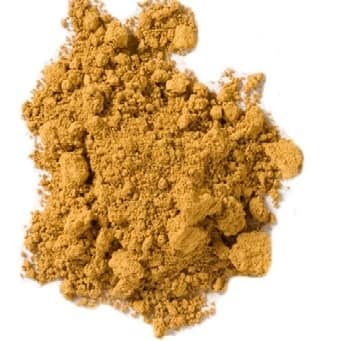
Yellow in nature: OchreNowadays, yellow isn’t just a colour used for decoration. It comes in a multitude of shades, from bright to light, and people use these to set a mood or depict certain emotions. But where did it all start? With yellow ochre. Known as an ‘earth pigment’, ochre is a natural mineral that is found in rocks or sand across the globe. It was among the first minerals used by humans.
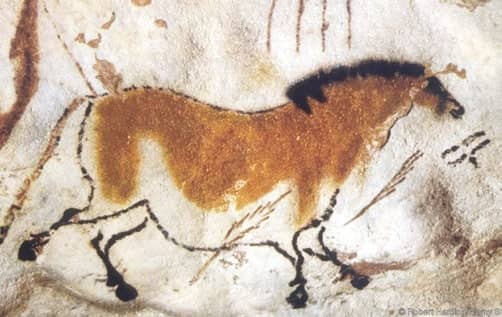
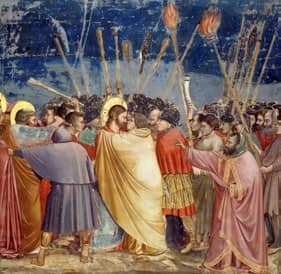
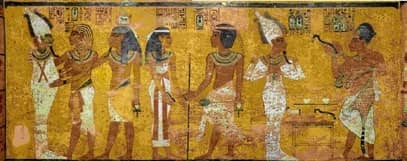
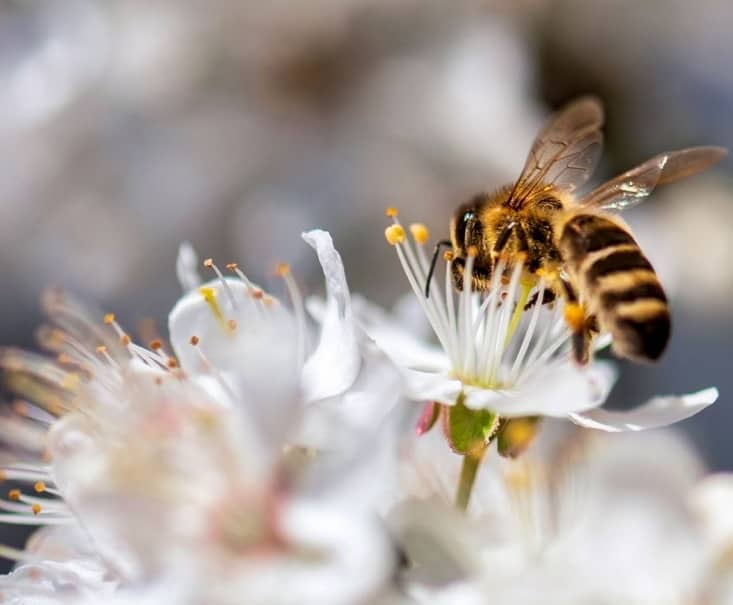
Wednesday, August 21, 2024
EXTINCT BIRD
Tuesday, August 20, 2024
STORY TIME
The suitcase
A man realised that he was about to die, as he saw God coming closer with a suitcase in His hand. God said, “All right son, it’s time to go.”
Surprised, the man responded, “Now? So soon? I had a lot of plans...”
“I’m sorry, but it’s time to go.”
“What do you have in that suitcase?” the man asked.
“Your belongings.”
“My belongings? You mean my things, my clothes, my money?” the man wondered.
“Those things were not yours; they belonged to the earth,” God replied.
“Is it my memories?” the man asked.
“Those never belonged to you, they belonged to time.”
“Is it my talents?”
“Those were never yours, they belonged to the circumstances.”
“Is it my friends and family?”
“I’m sorry they were never yours, they belonged to the path,” God said, as He shook His head.
“Is it my body?” the man asked.
“That was never yours, it belonged to the dust.”
“Is it my soul?"
Again God shook His head, “No that is mine.”
Full of fear, the man took the suitcase from God and opened it, just to find that the suitcase was empty. With tears coming down his cheeks, the man said, “I never had anything?”
God answered, “That is correct; every moment you lived was only yours. Life is just a moment, a moment that belongs to you. You were born with empty hands and will die empty-handed."
☆☆☆
For this reason, enjoy this time while you have it. Don’t let anything that you think you own, stop you from doing so. Live now. Live your life with kindness and love. Don’t forget to be happy; after all, this is the only thing that matters.”
Monday, August 19, 2024
EXPLORING THE UNIQUE RAKSHA BANDHAN TRADITIONS ACROSS INDIA’S DIFFERENT PARTS
Threads of tradition
Raksha Bandhan isn’t just about rakhis and sweets; it’s a colourful blend of traditions that change as you move from one state to another in India. From sisters tying vibrant threads on their brothers’ wrists in the North to coastal communities offering coconuts to the sea, every region brings its own unique cultural significance to this sibling celebration. Raksha Bandhan is a festival that beautifully blends love and culture, displaying the rich diversity of India’s traditions.
Maharashtra: In Maharashtra and other coastal regions, Raksha Bandhan is celebrated as Naarali Poornima, a festival that centres around the worship of the sea. On this day, the local fishing communities offer coconuts to the sea as a symbol of reverence and to seek blessings from it. People prepare special dishes using coconut as a main ingredient. After the sea worship rituals are completed, the festivities continue with community gatherings, marking the transition from religious observance to joyful celebration.
Rajasthan: While most North Indians celebrate Raksha Bandhan by tying a rakhi on their brothers’ wrists and praying for their long lives, brothers, in return, vow to protect their sisters from all hardships. However, in the Marwari and Rajasthani communities, the tradition goes a step further. Here, sisters also tie a rakhi, known as a Lumba rakhi, on the bangle of their brother’s wife. The reason behind this unique custom lies in the belief that the wife, considered the ‘ardhangini’ or better half, is an integral part of the brother’s life. The ritual acknowledges that the responsibility of protecting and loving a sister is not just the brother’s duty alone but is shared equally by his wife. This makes the Raksha Bandhan celebration more unique, embracing the sister-in-law as an important part of the tradition.
Madhya Pradesh and Bihar: On this day, mothers and their sons do a special pooja, while farmers worship their land. The celebrations start a week before the main celebration. The wives of farmers go to their fields and collect soil by wrapping it in leaves. The soil is then sown with barley and kept in a thoroughly cleaned and decorated area of the house. This is called the ‘put’. When the seven days are up, mothers take the ‘put’ and pray for their sons’ longevity before immersing them in a well or river.
Tamil Nadu and Kerala: The celebration of Rasha Bandhan is called Avani Avittam in states like Kerala and Tamil Nadu. The festivities are mostly for the family’s male members. On this day, Brahmins immerse themselves in the river and seek forgiveness for all of their past sins. The janau, or holy thread, worn across the body, is replaced with a new thread at the end of the custom. They also make promises to do good deeds during this "thread changing" ceremony.
Odisha: On Gamha Purnima, cows and bullocks are worshipped in many regions of Odisha. The festival is marked by a unique local sport known as Gamha Diyan, which is one of the highlights of the festival. Gamha Purnima is celebrated as the birth anniversary of Lord Baladeva, the elder brother of Bhagavan Sri Krishna. Over time, this traditional festival has also embraced the observance of Raksha Bandhan, inspired by the Rakhi festival celebrated on the same day across North India. This blend of rituals symbolises the strong cultural ties and evolving traditions that continue to define Odisha’s vibrant heritage.
West Bengal: This day marks the end of the five-day ritual of Lord Krishna and Radha swinging on a jhula, celebrated as Jhulan Poornima. The festivities kick off on Pavitra Ekadashi and end on Raksha Bandhan, which falls on the full moon day. During this time, idols of Lord Krishna and Radha are placed on a swing and made to swing, symbolising their divine love. The swing, adorned with vibrant flowers and intricate designs, becomes the highlight of celebrations, especially at the ISKCON temple in Mayapur, where the festival is marked with music and devotion. The whole atmosphere is filled with joy, devotion, and the colourful energy that surrounds the sacred bond of these divine beings.
Sunday, August 18, 2024
INFUSE JOY INTO YOUR AND SOMEONE ELSE'S LIFE
The Significance Of A Smile
Have we ever thought about the gestures we use daily, knowingly or unknowingly, that have a profound impact on our lives? One such gesture, right under our noses, has the power to make us happier and potentially lengthen our lives. Can you guess what it is? Yes, it's the simple yet powerful act of smiling.
The smile is a ubiquitous and heartening gesture, connecting us all, whether acquainted or strangers. This simple expression has the remarkable ability to infuse joy into someone's life, fostering a sense of unity and warmth.
A study reveals that the frequency of smiles tends to decrease as we age. Astonishingly, adults over the age of thirty smile, on average, only 40-50 times a day, whereas children effortlessly clock in 300-400 smiles daily. The bustling lives and responsibilities gradually overshadow the simplicity of smiling.
A smile costs nothing but holds immeasurable value. It transcends language barriers, brings solace to the weary, and bridges the gaps between strangers. As we navigate our daily routines, let's preserve this innate ability to smile and rediscover the joy that a sincere smile can bring.
So let us all wear a big genuine smile on our faces. Embrace the positivity it radiates and carry it forward, creating a ripple effect that transcends the boundaries. A smile is a universal language, and by sharing it generously, we contribute to creating a world filled with warmth, kindness, and joy. Let's spread this infectious energy of smiles, uplift the spirit with a smile in our day-to-day life. May your days ahead be filled with countless reasons to smile!
Saturday, August 17, 2024
A DEADLY DISEASE
Friday, August 16, 2024
DO YOU KNOW
Thursday, August 15, 2024
INTERESTING FACTS
About India's Independence Day
Here are some interesting facts about India’s Independence day:
● India had no national anthem when it became an independent country on 15th August, 1947. It was adopted as India’s national anthem later in the 1950s. The Bengali version of Jana Gana Mana was written by Rabindranath Tagore in 1911 which was first sung during the Calcutta session of the Indian National Congress.
● Although India became independent on July 18, 1947, Lord Mountbatten declared 15th August as the date of Independence because this date observed the second anniversary of the surrendering of Japan to the Allied Forces during World War II.
● The National Flag was first hoisted at the Parsee Bagan Square in Calcutta on August 7, 1906. The flag had three horizontal strips of red, yellow and green color. The red strip at the top consisted of 8 white lotuses imprinted on the flag in a line. On the yellow strip, Vande Mataram was written in Hindi. There was a white sun on the left and a white crescent and star on the right imprinted on the green strip.
● The first variant of the national flag was designed by Pingali Venkayya in 1921. It consisted of two colors-red and green which represented the two significant communities. But Gandhiji later recommended to add a white strip in the middle with a spinning wheel. The white color represented the remaining Indian communities and the spinning wheel signified the progress of the country.
● Our country got its name ‘India’ from the River Indus, a place which was a home to the country’s first inhabitants.
● No country had ever been invaded by India in the last thousand centuries of its history.
● India shares its Independence Day with five more countries on August 15, but with different years. The countries are Bahrain, North Korea, South Korea, Congo, and Liechtenstein.
● Even after India became independent in 1947, Goa still remained a Portuguese colony. Portugal made amendments in its constitution stating Goa as a Portuguese state. It was made a part of India in 1961 after Indian troops annexed the state to India.
● The Khadi Development and Village Industries Commission is the only licenced company engaged in the production and supply of Indian flag. The Karnataka Khadi Gramodyog Samyukta Sangha located in Dharwad is the only manufacturer of the flag made with cotton.
● Pandit Jawaharlal Nehru, India’s first Prime Minister, featured on the famous Vogue magazine because of his unique dressing sense. His jacket became a popular fashion trend in the West and came to be known as the ‘Nehru jacket’.
● Mahatma Gandhi was absent from the celebrations of the country’s first Independence Day. He was there to be a part of a hunger strike that was conducted to impede the communal killings that were triggered due to partition.
● There was a controversy relating to the Indian national anthem, Jana Gana Mana that it was written by Rabindranath Tagore for the British emperor. He refused these claims on the basis that the song talked about the victory of Bhagya Vidhata of India and not of the British king.
● The price of 10 grams of gold was Rs 88.62 at the time of independence.
Wednesday, August 14, 2024
13 AUGUST
A Cut Above the Rest
✂️ THE HISTORY OF SCISSORS With just a little squeeze, scissors can cut paper, string, fabric, and even hair. They are so common today that...

-
ANNABELLE The real Annabelle doll is a well-known case of alleged paranormal activity, made famous by Ed and Lorraine Warren, two well-know...
-
WHY IS SUGAR WATER STICKY? Sugar water is sticky because sugar molecules have a strong affinity for water molecules, forming hydrogen bonds ...
-
What is Retro walking? Retro walking is backward walking, usually done as a form of exercise. It is claimed that 100 steps of backwar...
































